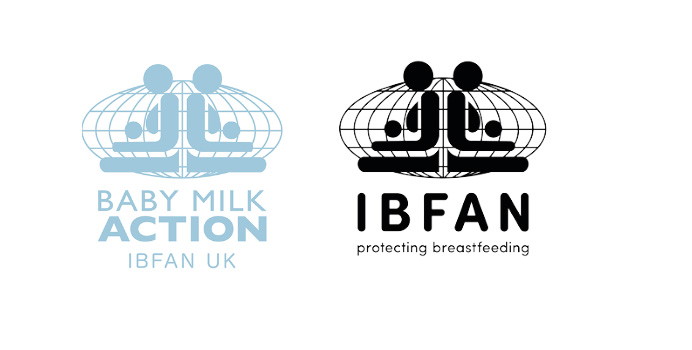New study funded by WHO and Swedish University of Agricultural Sciences finds breastfeeding has a consistently lower carbon footprint than using breastmilk substitutes. This was true for all four countries studied in the assessment: UK, China, Brazil and Vietnam, where the impact of breastfeeding was 40%, 53%, 43% and 46% lower, respectively, than that arising from using BMS.
The carbon footprint of breastmilk substitutes in comparison with
breastfeeding
11 March 2019
Johan O. Karlsson a, *, Tara Garnett b, Nigel C. Rollins c, Elin Roos a
a Department of Energy and Technology, Swedish University of Agricultural Sciences, Uppsala, Sweden
b Food Climate Research Network, Environmental Change Institute, Oxford University, Oxford, UK
c Department of Maternal, Newborn, Child and Adolescent Health (MCA), WHO, Geneva, Switzerland
ABSTRACT
Breastfeeding is one of the foundations of child health, development and survival. Breastmilk substitutes
(BMS) are associated with negative influences on breastfeeding practices and subsequent health concerns
and, as with all foods, production and consumption of BMS comes with an environmental cost. The carbon
footprint (CFP) of production and consumption of BMS was estimated in this study. To illustrate regional
differences among the largest producers and consumers, the CFP of BMS production in New Zealand,
United States (USA), Brazil and France and the CFP of BMS consumption in United Kingdom (UK), China,
Brazil and Vietnam were assessed. The CFP values were then compared with the CFP of breastfeeding
arising from production of the additional food needed for breastfeeding mothers to maintain energy
balance (approximately 500 kcal per day). The CFP of production was estimated to be 9.2 ± 1.4, 7.0 ± 1.0,
11 ± 2 and 8.4 ± 1.3 kg CO2e per kg BMS in New Zealand, USA, Brazil and France, respectively, with the
largest contribution (68e82% of the total) coming from production of raw milk. The CFP of consumption,
which included BMS production, emissions from transport, production and in-home sterilisation of bottles,
and preparation of BMS, was estimated to be 11 ± 1, 14 ± 2, 14 ± 2 and 11 ± 1 kg CO2e per kg BMS in
UK, China, Brazil and Vietnam, respectively. Comparison of breastfeeding with feeding BMS showed a
lower CFP from breastfeeding in all countries studied. However, the results were sensitive to the method
used to allocate emissions from raw milk production on different dairy processing co-products (i.e. BMS,
cream, cheese and lactose). Using alternative allocation methods still resulted in lower CFP from breastfeeding,
but only slightly for UK, Brazil and Vietnam. Care is also needed when interpreting findings about
products that are functionally different as regards child health and development.
CONCLUSION:
The results obtained in this study indicate that breastfeeding has a consistently lower carbon footprint than using BMS. This was true for all four countries studied in the assessment: UK, China, Brazil and Vietnam, where the impact of breastfeeding was 40%, 53%, 43% and 46% lower, respectively, than that arising from using BMS. However, the results were sensitive to allocation of emissions between different dairy co-products and using alternative allocation methods resulted in a 12%e36% smaller CFP from BMS. If allocation was based on the fat and protein content of dairy coproducts (i.e. allocating few emissions to lactose) and no sterilization of feeding bottles was assumed (in contradistinction to WHO recommendations) the CFP from BMS was smaller than that of breastfeeding in the studied case countries. This study only assessed the climate impact of different infant feeding approaches, but food production also affects the environment in many other
ways, including via pollution and contamination of waterways and soils, biodiversity loss and use of limited or non-renewable resources such as land, water and fossil fuels. Ideally, a full comparison of the environmental impact of BMS versus breastfeeding would also take these into account, but this is a difficult task, made harder by the fact that many of the impacts that arise are localised, whereas the climate impacts assessed here are global. In this study BMS was compared to breastfeeding assuming that the two are functionally equivalent and substitutable. However, this is often not
the case. On the one hand a large (although recently partly contested) evidence base points towards positive health and developmental outcomes of breastfeeding as compared to using BMS. But, on the other hand breastmilk substitutes are a necessity in cases when, for medical or other reasons, breastfeeding is not a possibility. Care should therefore be taken when comparing the climate impact of these two “products” with partly diverging functions.
© 2019 The Authors. Published by Elsevier Ltd. This is an open access article under the CC BY license
(http://creativecommons.org/licenses/by/4.0/).
See also:
Dadhich, J., Iellamo, A., Suleiman, A., 2015. Report on Carbon Footprints Due to Milk
Formula: a Study from Selected Countries of the Asia-Pacific Region. BPNI/
IBFAN Asia, New Delhi. http://ibfan.org/docs/Carbon-Footprints-Due-to-Milk-
Formula.pdf. (Accessed 24 January 2019
